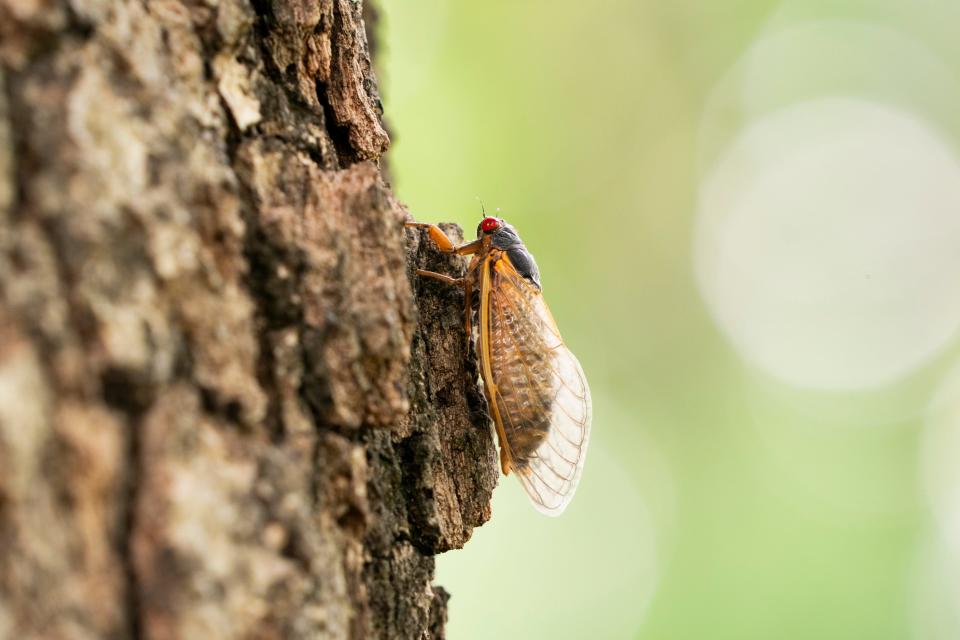How long will cicadas be around this year? Here's when to expect Brood XIX, XIII to die off
Trillions of periodical cicadas from two broods are emerging from their underground habitats in over a dozen states this year, filling the air and creating a lot of noise in the process.
There are two broods hitting a combined 17 states this year: the 13-year Brood XIX located mainly in the Southeast, and the 17-year Brood XIII in the Midwest. The two broods, which have not emerged together since 1803, will be found in both Illinois and Iowa.
You may have already seen some of these cicadas emerging, but how long will they be around this year, and how long do they stay underground between emergence years?
Here's what to know about a cicada's life, both under and above ground.
2024 cicada map: See where Brood XIX, XIII cicadas are emerging around the US
When do cicadas emerge?

According to Cicada Mania, the cicadas begin to emerge from their underground habitats when the soil 8 inches underground reaches 64 degrees, and are often triggered by a warm rain.
Thanks to warm temperatures, cicadas have already been spotted above ground in states across the Southeast and Midwest.
Can you eat cicadas? Try these tasty recipes with Brood XIX, Brood XIII this summer
How long will the cicadas be above ground?
How long cicadas live depends on their brood and if they are an annual or periodical species.
The two periodical broods this summer are Brood XIX, which have a 13-year life cycle, and Brood XIII, which have a 17-year life cycle.
Once male and female periodical cicadas have mated and the latter has laid its eggs, the insects will die after spending only a few weeks above ground ? anywhere from three to six weeks after first emerging.
That means many of this year's periodical cicadas are set to die in June, though some could die off in late May or July, depending on when they emerged.
The nymphs of annual cicadas remain underground for two to five years, according to the Missouri Department of Conservation. These cicadas are called "annual" because some members of the species emerge as adults each year.
What is the life cycle of a cicada?
The life cycle of a cicada starts with mating. The female then lays eggs in holes made in tree branches and shrubs, National Geographic reports. The eggs will hatch after six to 10 weeks and the cicada nymphs will burrow themselves into the ground, attaching to the tree's roots.
The cicadas will remain underground for a "dormant period" of two to 17 years, depending on the species. Then they emerge in adult form, according to National Geographic.
2024 emergence map: Check out where Broods XIX, XIII are emerging
The two cicada broods were projected to emerge in a combined 17 states across the South and Midwest. They emerge once the soil eight inches underground reaches 64 degrees, expected to begin in many states in May and lasting through late June.
The two broods last emerged together in 1803, when Thomas Jefferson was president.
Contributing: Olivia Munson, USA TODAY.
This article originally appeared on USA TODAY: Cicadas 2024: How long will they be around, and when will they leave?
